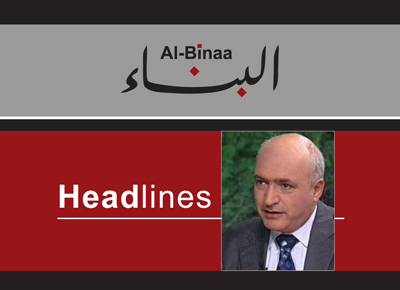The Hudhud With a Revised and Detailed Edition of Haifa Bay: These Sites Will Resemble Kiryat Shmona / 200 Resistance Rockets Cause Fires Casualties and Injuries Beyond the Solid Ground Front
Biden and Netanyahu on One Side, Araghchi and bin- Farhan on the Other: Managing War and Negotiations

October 10, 2024
The political editor wrote
From a partnership stance regarding the assessment of what works and what can prevent uncontrollable repercussions- the talks between the U.S. President Joe Biden and Israeli Prime Minister Benjamin Netanyahu centred on the type, nature, and objectives of the so-called “Israeli response” to Iran.
This meeting has been heralded as a miraculous event for which Arab people and peace-lovers worldwide should be grateful, as supposedly it will prevent Netanyahu from recklessly targeting nuclear or oil facilities in Iran, potentially sparking a regional war. In reality, Netanyahu cannot move an inch without U.S. backing, both in terms of weaponry and protection from Iran’s retaliation. Targeting Iran, much like targeting Hezbollah, Hamas, and other resistance forces, is as much an American strategy and vision for “a new Middle East”, as it is an Israeli interest. Just as U.S. intelligence, armament, and operations were crucial in delivering painful blows to Hezbollah, the strike against Iran will be decided based on an assessment of Israel’s ability to withstand Iran’s response and the level of American assistance to protect the entity from the consequent-retaliation.
Meanwhile, Iranian Foreign Minister Abbas Araghchi and Saudi Foreign Minister Faisal bin-Farhan were meeting in Riyadh, before Araghchi later met with Saudi Crown Prince Mohammed bin-Salman. Within their discussions, framed by their regional partnership and concerns over the impact of an Israeli war on stability, they addressed the risks of an uncontrollable war amidst the ongoing brutal and criminal offensive of the Israeli entity on Gaza and Lebanon. According to sources familiar with the meetings they deliberated on what two influential regional powers, such as Saudi Arabia and Iran, could do to prevent further deterioration and offer support to the Palestinian and Lebanese people as they face the challenges imposed by the Israeli war.
In Lebanon, the resistance delivered a dual attack with over 200 rockets launched at Haifa Bay, Safed, and Kiryat Shmona, resulting in casualties, injuries, and fires. Simultaneously, resistance drones released a new version of the Hudhud, offering a detailed map of potential targets in Haifa Bay, ranging from military, civilian, and service-related sites to economic and oil facilities. The message was clear: this map serves as a precursor to what future resistance missile strikes will target if the savage and criminal bombardment by the occupying army against civilians and service and economic institutions does not cease. Meanwhile, on the ground front, the resistance continued to demonstrate resilience and control over the course of the confrontation, dictating the tempo to an Israeli army that has failed to achieve any breakthroughs in the face of the resistance’s diverse forms of attacks.




